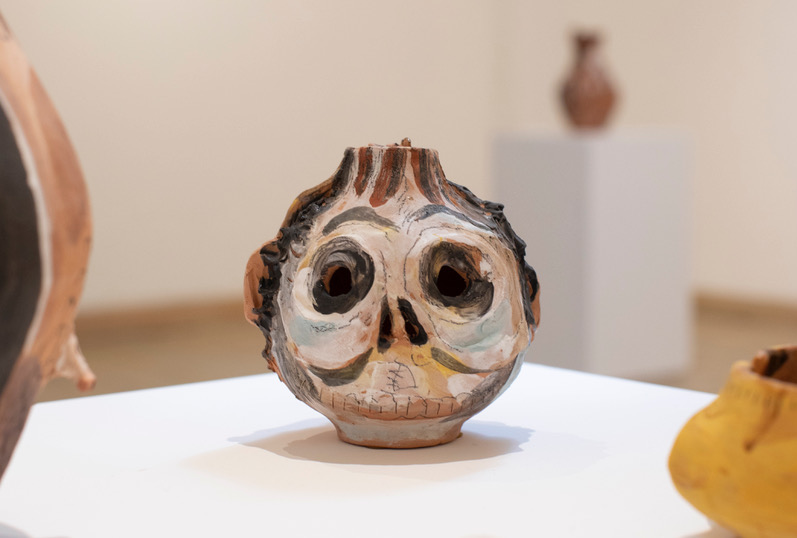
Review
About Night during the day by Lucía Vidales
by Alan Sierra
At the Sala:GAM
Reading time
4 min
There are a number of problems met when defining fantasy as a genre. If we think of the genre as involving the harsh intrusion of mystery, then we will accept an unconditional violence, as well as an artificial attitude in the writing; but if we qualify it as a figuration of the inexplicable in the world of the real, then we will receive the impression of a work imagined by myopic eyes.One might arrive at the radical conclusion of Borges, when he affirms that all literature is fantastic. Although this is an intelligent observation, it is also, in the end, a relativistic one.
The fantastic has also been thought of as an incredible occurrence happening in a perfectly credible world. In my opinion, the best arguments claim that fantasy, whether sordid or wonderful, cultivates attention and surprise.
Lucía Vidales’s exhibition Night during the day uses the conventions of figurative painting to create fictions with a deliberate detachment from reality.
The exhibition, curated by Paulina Ascencio for the Gallery of Mexican Art (GAM), establishes a dialogue between Vidales's contemporary work and the past work of other Mexican artists: Pita Amor, Leonora Carrington, Olga Costa, María Izquierdo, Joy Laville and Cordelia Urueta.

Based on Vidales’s observation of the accompanying pieces by these other artists, Vidales produced new bodies of work that stand out for their use of chromatic variations and other materialities. Using a range of processes, the artist devised visual economies that act as the backdrop for her characters.
Lucía's works demand a close reading with an almost pathological eye to dissect how they were made. Her paintings are composed of layers of peculiar events and, to get closer to them, it is necessary to play the role of the magician, revealing an object hidden under many scarves. If you look closely you can find extraordinary stories: gazes that look like punctuation marks, neurotic animals, warped copulations, detached scalps, unknown body parts.

It is possible to establish a connection between the work of Vidales and that of Pita Amor, Leonora Carrington and Joy Laville. This group of artists, with an eye and a hand in literature, took advantage of their proximity to language and used it to give way to their imaginations.
In the same way, literary implications unfold in Lucía's work.
With the ceramic vessels, which were crafted for this show, Vidales feeds on the narrative tradition of these utilitarian objects. Ceramic makes for an ideal medium to extend her practice because it allows the hand to negotiate between the practical limitations of the material, formal explorations and the appropriate space to tell a story.
The titles of these works extend their narrative possibilities, appearing as corridors that augment the route with twists and turns, enhancing the visitor’s inner world.
In parallel with the pictorial tradition of Olga Costa, María Izquierdo and Cordelia Urueta, Vidales explores genres such as still life, nude and landscape. Through agglomerations of paint, faintly realized characters and inexplicable lights on the horizon, the adage about the best hiding place for a secret will prevail: in plain sight of everyone.
It is possible to chat for hours with Lucía. Her curiosity has led her to study mythologies, ghost stories, the lives of saints, the underground history of painting. In light of this research, it seems important to ask if her methods are similar to the practices of spiritual mediums; repeating the tales of the dead is a way of calling them, of understanding how to speak to them and bringing them back to life.
When considering the validity of these images, it is worth mentioning what Bioy Casares established in the prologue for the Anthology of fantastic literature. The anthologist ascribes a deficiency of rigor to the writing of non-fiction, since psychologically everything is both possible and credible. For a true art, like panacea, recalls the ancient exercise of fantasy.
With the will to read the world through its most ignored details, its oddities and inconsistencies, Night during the day brings together remarkable works that project the mysterious, the illogical and that which is as old as fear itself, that which precedes language.
Published on August 25 2019